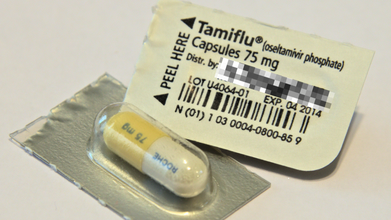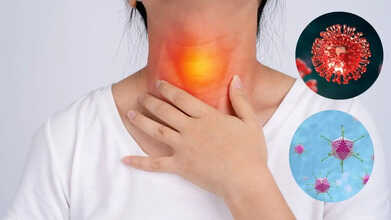- Health Conditions A-Z
- Health & Wellness
- Nutrition
- Fitness
- Health News
- Ayurveda
- Videos
- Medicine A-Z
- Parenting
Meatfluencer Dr Paul Saladino Becomes Herbivore: Here Are Shocking Reasons Behind His Switch

Credit: Canva/X
A carnivore diet is a restrictive diet that only includes meat, fish, and other animal products like dairy and eggs. More recently, it has been brought into the limelight by influencers and social media personalities. In fact, there is a whole community of "meatfluencer" who are sharing their meat-eating plans. One of them is Dr Paul Saladino MD, whose belief that there was no better way to prevent chronic diseases than a carnivore diet prompted him to write books and post videos regarding the same. He believed so much in this eating plan that he became a go-to person for many following the same plan, until recently, when he decided to quit.
Here Are Seven Reasons Why He Decided To Quit
Carnivore Diet Disrupted His Sleep
Switching to an all-meat diet isn't always straightforward, especially when it comes to digestion—a lesson Dr Saladino learned firsthand. He experienced sleep disturbances, likely due to the difficulty of digesting high-protein meals. Since protein takes longer to break down, it demands more energy from the body, which can interfere with rest.
According to Johns Hopkins Medicine, digestion slows by up to 50% during sleep. Additionally, many types of meat contain tyramine, a compound derived from the amino acid tyrosine. Increased tyramine intake can lead to health issues and also triggers the release of norepinephrine, a hormone that raises heart rate and blood pressure, making restful sleep harder to achieve.
He also experienced hypnagogic jerks—sudden muscle spasms that jolt the body awake. "I would fall asleep but then jerk myself awake like I was falling multiple times. It was stressful and traumatic, leading to poor sleep," he shared in his YouTube video.
Eating Only Meat May Have Triggered Heart Palpitations
Another concerning side effect Dr Saladino experienced was heart palpitations—episodes where his heart felt like it was racing or fluttering. While stress is a common cause, few would immediately link palpitations to meat consumption.
However, a sudden shift to an all-meat diet can lead to electrolyte imbalances. The elimination of carbohydrates lowers insulin levels, prompting the kidneys to excrete more sodium. This disrupts the balance of essential minerals like potassium and magnesium, which are crucial for heart function.
Muscle Cramps Became Persistent
Dr Saladino also suffered from frequent muscle cramps while following the carnivore diet. In a post on X, he emphasized the importance of maintaining adequate magnesium, calcium, and potassium levels to prevent cramping. He initially believed that animal-based foods provided sufficient minerals, but his ongoing cramps led him to reconsider.
"I started to think maybe long-term ketosis is not great for me,” he admitted on the *More Plates More Dates* podcast. “Probably not a great thing for most humans."
His Testosterone Levels Dropped Significantly
Dr Saladino also saw a decline in his testosterone levels after following the carnivore diet for over a year. "At the beginning of my carnivore experiment, my testosterone was about 800. After a year to a year and a half, it had dropped to around 500," he revealed.
The issue likely stems from excessive protein intake, which can elevate inflammation and disrupt hormone levels. A 2022 study published in Nutrition and Health found that consuming more than 35% of daily calories from protein can lead to various negative effects, including reduced testosterone.
He Had Chronically Low Insulin Levels
Because he largely eliminated carbohydrates—except for a small amount of fruit—Dr Saladino developed persistently low blood sugar. In his YouTube video, he explained, "I had very low insulin because I wasn’t eating carbohydrates, and the protein I consumed wasn’t insulinogenic enough."
While some diabetics report improved blood sugar control on the carnivore diet, its effects vary based on individual metabolic responses. For non-diabetics, low insulin can lead to hypoglycemia, causing symptoms like dizziness, confusion, a racing heart, and, in extreme cases, seizures or coma. Mild cases can be managed with fast-acting carbohydrates like juice or candy, but severe episodes require medical attention.
His Blood Test Results Showed Concerning Imbalances
Lab tests revealed that his magnesium levels were low, while his sex hormone-binding globulin (SHBG) was elevated—both potential red flags for long-term health issues.
A magnesium deficiency can cause numbness, tingling, fatigue, nausea, headaches, and muscle cramps. Since cramps often strike at night, low magnesium may also contribute to sleep disturbances.
High SHBG levels indicate an excess of circulating protein in the blood, which can increase the risk of heart disease, osteoporosis, and depression. To counteract these imbalances, introducing more magnesium-rich foods—such as leafy greens, nuts, beans, and yogurt—could be beneficial.
He Felt Cold All The Time
Electrolyte imbalances and metabolic disruptions can even affect body temperature, which Dr. Saladino experienced firsthand. "I was always cold,"he shared in his YouTube video.
Upon testing his thyroid function, he discovered that his total T3 and free T3 hormone levels were "not ideal." These hormones regulate metabolism, and low levels can slow down metabolic processes, leading to cold intolerance.
Tamiflu Isn't The Only Flu Medicine, Expert Shares Other Alternative

Credits: iStock
Flu season is hitting hard this year, and the symptoms could feel relentless. People are suffering from rising fever, hacking cough, blocked and stuffy nose and sore throat. While many people get relief from Tamiflu, which is a prescribed antiviral medication that is used to treat or even to prevent illness, there are other alternatives available too.
Dr Ari Brown, a Texas based pediatrician and the author of Baby411 book series told CNN health that one of the most common complaints that she gets to hear from Tamiflu is vomiting. A 2023 study published in the Pediatric Infectious Disease Journal notes that 18% of people experienced vomiting with Tamiflu, as compared to 5% with Xofluza, an alternative.
“I’ve also had a few pediatric patients experience moodiness with Tamiflu, which is reported in the literature,” she said.
Read: Adenovirus Cases Rise In UK, Health Authorities On Alert
Tamiflu is usually gives to treat flu in people ages 2 weeks and older and to reduce the chance of getting the flu in people 1 year and older. The medicine could be administered in both form, liquid and capsules and usually taken twice daily for five days straight. This is prescribed for when flu is to be treated. However, when used for prevention, it is typically taken once for 10 days.
What Are The Other Alternatives Available For Flu Treatment?
Xofluza: It is administered as a single dose tablet and is approved for ages 5 and older. This medicine can also be used to treat or to prevent the flu. While it costs nearly $200 for those without insurance, eligible patients can use coupons to lessen costs. Dr Brown points out that this medicine could have side effects like diarrhea and vomiting. However, the study aforementioned notes that for this, only 5% patients had vomiting symptoms, when compared with Tamiflu.
Dr Brown also said that Xofluza can stop viral shedding in one day, while Tamiflu could take up to three days. "Both antivirals will help reduce the duration of misery by couple of days," she pointed out.
Dr Brown also pointed out that overall, "Xofluza is rising in popularity over Tamiflu." “One dose. Fewer side effects. More insurances are covering the cost of it now and manufacturer coupon makes it less expensive than in previous years," she said.
Rapivab: This is another prescribed medication that is approved to treat flu. This could be administered for people ages 6 months and older. It has to be given by a health care provider, as it is given once as an intravenous infusion. It could cost up to $1,000 without insurance and most common reaction in adults is diarrhea.
Relenza: This flu medication is inhaled in powder form. It is administered through an inhaler device, which is to be used twice a day for five days straight. The prescribed drug is approved to treat flu in ages 7 and older and for preventative use, in ages 5 and older. It could cost about $90 without insurance.
It may have side effects like dizziness, allergic reaction, or irritation of the nose. It is not recommended for people who have breathing issues or have asthma.
How To Cure Hangover Headache At Home?

Credits: Canva
Hangover headaches are miserable. Most people know that drinking too much alcohol can leave you with a long list of next-day problems, and a headache is one of the most common. You will find no shortage of so-called hangover headache “fixes” online, in home remedies, and even on store shelves. The problem is that very few of them are backed by solid scientific evidence. The surest way to prevent a hangover headache is to watch how much alcohol you drink at one time. That said, there are a few simple, home-based steps that may lower your risk of waking up with a headache, and some practical ways to manage the pain if it has already set in.
What Is A Hangover?
A hangover refers to the uncomfortable physical and mental effects you experience after drinking too much alcohol the night before. According to the Cleveland Clinic, hangovers are extremely common among people who overdrink. One study found that nearly 75% of people who consumed excessive alcohol reported hangover symptoms the following day. The same research suggested that about 25% to 30% of drinkers may not experience hangovers at all.
How Much Alcohol Does It Take To Get A Hangover?
Drinking more than one alcoholic beverage per hour can lead to a hangover. Your body generally needs about an hour to break down and process a single drink. As explained by the Cleveland Clinic, one drink is roughly equal to:
- One 12-ounce can of regular or light beer (5% alcohol).
- Half a pint, or about 8 to 9 ounces, of malt liquor or many craft beers (7% alcohol).
- One 5-ounce glass of table wine (12% alcohol).
- One shot, or 1.5 ounces, of liquor (40% alcohol).
How To Cure Hangover Headache At Home?
Many products and home remedies claim they can cure a hangover, but most are not supported by science, and some may even do harm. For instance, having more alcohol the next morning does not fix a hangover. It simply adds more toxins to your system.
Instead, consider these self-care measures for hangover relief:
- Eat simple foods with complex carbohydrates, such as toast or crackers. These can help raise low blood sugar levels and ease nausea.
- Drink plenty of fluids. Water, electrolyte drinks like Gatorade® or Pedialyte®, broth, and other non-alcoholic beverages can help counter dehydration. A good sign you are rehydrated is when your urine becomes clear.
- Get adequate sleep to help your body recover from fatigue.
- Use antacids to calm stomach discomfort.
Consider aspirin or other nonsteroidal anti-inflammatory drugs (NSAIDs) such as ibuprofen or naproxen to relieve aches and pains. NSAIDs are generally the most effective medications for hangover-related pain, but they should be used cautiously because they can irritate your stomach. Avoid acetaminophen (Tylenol), as combining it with alcohol can damage your liver.
Give it time. Hangover symptoms usually improve within eight to 24 hours. During this period, your body works to eliminate alcohol toxins, restore hydration, repair tissues, and return normal body functions to baseline.
Adenovirus vs Cold vs Flu: How To Tell The Difference As This Mystery Illness Spreads

Credits: Canva
Although many people are only now becoming aware of it, adenovirus is being widely described as a “mystery illness spreading worldwide,” and that description feels accurate when you consider how many people are reporting symptoms at the moment. Adenovirus can cause fever, a runny nose, sore throat, and stomach discomfort, which makes it difficult to distinguish from a regular cold or the so-called “super flu” that is currently circulating. If you are feeling unwell, or concerned about catching an infection just before the holiday season, Dr Deborah Lee from Dr Fox Online Pharmacy explains how to tell adenovirus apart from the common cold and from the H3N2 flu strain.
What Is Adenovirus?
Adenovirus refers to a large group of viruses that can lead to infections ranging from mild to more severe. These viruses can affect the respiratory tract, eyes, digestive system, and urinary tract, often causing symptoms that look very similar to a cold or flu.
Adenoviruses are hardy, spread mainly through respiratory droplets, and can infect people throughout the year. Children and individuals with weaker immune systems may experience more serious illness, but most people recover with rest and fluids, according to the Cleveland Clinic.
Adenovirus vs Cold: How Does Adenovirus Differ From Common Cold?
Adenovirus is one of several viruses that can trigger cold-like symptoms. It helps to think of a cold as a set of symptoms rather than a single illness, with adenovirus being just one possible cause. “Adenovirus is just one virus that can cause the common cold,” says Dr Lee. She adds that many other viruses can also be responsible, including respiratory syncytial virus (RSV), rhinoviruses, parainfluenza viruses, and coronaviruses.
Identifying the exact virus behind your cold symptoms is very difficult. “It is pretty much impossible for you or a doctor to know which virus is causing your cold symptoms,” Dr Lee explains.
Adenovirus vs Flu: How Does Adenovirus Differ From The Flu?
“The flu can be extremely unpleasant, whereas adenovirus is usually mild,” Dr Lee says when comparing the two. She explains that flu symptoms often appear suddenly, sometimes within hours, and are usually marked by a high fever and severe discomfort.
According to Dr Lee, flu symptoms can include:
- A high temperature between 38°C and 40°C
- Joint pain and muscle aches
- Headache
- Sore throat
- Blocked or stuffy nose
- Dry cough
- Extreme fatigue
In contrast, adenovirus symptoms, when they appear at all, tend to develop slowly over several days, Dr Lee notes.
Other important differences between adenovirus and flu include:
- Adenovirus infections can occur at any time of year, while flu is more common during winter
- Adenovirus frequently causes pink eye, whereas influenza may lead to red or irritated eyes but less commonly
- Adenovirus often causes digestive symptoms such as vomiting and diarrhoea, while flu can cause these but does so less often
- Adenovirus is generally less likely to cause serious complications than influenza
Adenovirus: How To Tell If You Have Adenovirus Or Cold Or Flu?
Although adenovirus and common cold symptoms often overlap, the intensity of “super flu” symptoms usually stands out. Even so, Dr Lee explains, “The only way to really know the cause of your symptoms is to have a swab taken by a medical practitioner. This may be from the nose, throat, eye, urine, or stool.”
In most cases, testing is unnecessary and unlikely to be offered. “Because the vast majority of these viral infections are mild and self-limiting, this is rarely done,” says Dr Lee. “Treatment for any cold is symptomatic only.” She adds that extra caution is needed for babies and young children, older adults, pregnant women, and people with weakened immune systems.
© 2024 Bennett, Coleman & Company Limited

